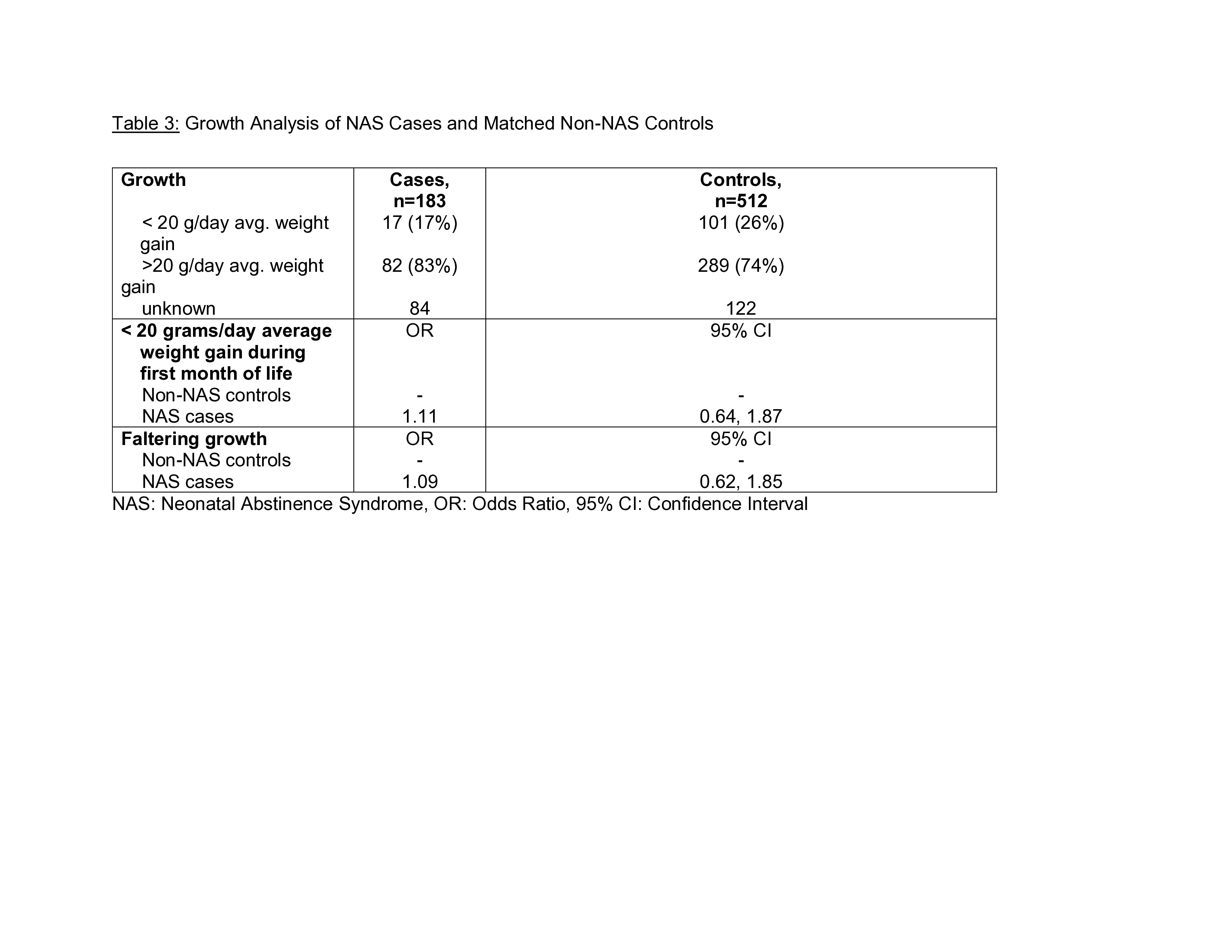Neonatology
Session: Neonatal Fetal Nutrition & Metabolism 1: Growth of Body and Brain
116 - Weight Gain Patterns in Infants with Neonatal Abstinence Syndrome Following Hospital Discharge
Friday, May 3, 2024
5:15 PM - 7:15 PM ET
Poster Number: 116
Publication Number: 116.484
Publication Number: 116.484
- PF
Polina Frolova Gregory, DO MS
Assistant Professor, Division of Pediatric Hospital Medicine
Seattle Children's Hospital
Seattle, Washington, United States
Presenting Author(s)
Background: Infants with neonatal abstinence syndrome (NAS) have an increased metabolic demand that often causes excessive weight loss from birth weight. Studies examining weight gain patterns after leaving the hospital are limited and it is unknown if infants with NAS are at increased risk for poor weight gain following hospital discharge.
Objective: We examined weight gain in cases with NAS during the first four months of life with the hypothesis that average daily weight gain would be < 20 grams/day and incidence of faltering growth would be higher in cases with NAS compared to matched non-NAS controls.
Design/Methods: We undertook a multicenter retrospective matched cohort analysis of infants with and without NAS born between 2016 to 2019. Eligible subjects included infants 37 0/7 to 41 6/7 weeks gestation who had between two to three follow-up appointments at four months of life after hospital discharge. We defined slowed weight gain as less than 20 grams per day and faltering growth as a weight below the 2nd percentile for age or a decrease in weight across two major weight percentiles prior to 4 months of life. Exclusion criteria included multiple gestation, infants with congenital co-morbidities, and critically ill infants requiring intubation after delivery. Infants with and without NAS were matched at a 1:3 ratio based on gestational age +/- 6 days, gender, and birthweight (+/- 100g). Development of faltering growth was estimated by logistic regression.
Results: Three hundred and sixty-eight cases with NAS met our initial inclusion criteria. Of these,185 had incomplete outpatient records and were excluded. One hundred eighty-three eligible NAS cases and 512 non-NAS controls were identified. A lower number of cases demonstrated < 20 grams/day average weight gain during the first month of life compared to controls. Twenty (12%) cases and 54 (11%) controls met criteria for faltering growth. Demographic characteristics are described in Table 1. Clinical characteristics are described in Table 2. Growth analysis examining weight gain patterns and incidence of faltering growth are described in Table 3.
Conclusion(s): Although excessive weight loss during the initial period of withdrawal in infants with NAS has been observed within the hospital setting, infants with NAS appear to normalize their weight gain patterns after discharge. Additional research is needed to better understand risk factors for faltering growth in infants with NAS.

.jpg)
.jpg)
